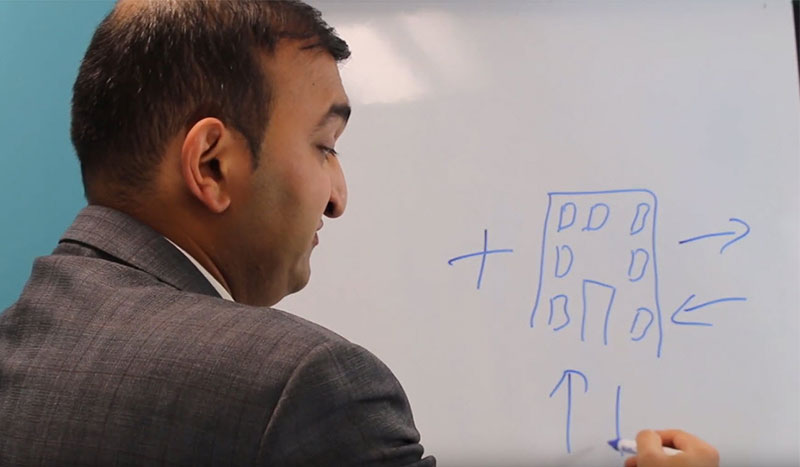On today’s Whiteboard Wednesday, Sachin explains the Fixed Assets Accounting lifecycle and the different ways that MRI Software can help to handle your fixed assets throughout their life.
Transcript:
Sachin: Hi. Welcome to another edition of Whiteboard Wednesday. My name’s Sachin working out of the sales team here at MRI software based out of the AMIA region, focusing mainly on fixed assets. Today I’m going to talk about the fixed asset accounting lifecycle that we have within our product suite.
Let’s start off with a typical item. We have a building here. During the lifetime of that building, we will need to account for it by adding it on to our asset register. The addition really is could be the building being built up over time or it could be the actual purchase of a new facility that we have.
During the lifetime, there may be a need to also then transfer the asset from one cost center to another cost center or one from an account code another account code and therefore within our MRIs fixed assets solution, we have the capability to manage that historically so you can see the effects over time and indeed the movements over time on the fixed asset.
Another event that could occur is also the revaluation of an asset. In the case of buildings, they go up in value and indeed down in value. Our fixed asset accounting solution that allows you to account for these changing values of assets to again make sure that we’re accounting for the asset correctly, we’re depreciating it correctly, we are storing the correct gross and net book values against our assets as well.
The other thing that could occur are things like enhancements. We can add a roof to the building for example. What this does is allow you, as users, to store one single item against the physical building but account for changes over time that maybe enhance it or make the life last a bit longer. These enhancement events account for those types of transactions.
Finally, we then need to think about the eventual disposal of the asset and that’s where we can physically say to the system, “Right, we are disposing of the asset there are this many procedures associated with that, it cost us maybe this much to get rid of that asset”.
A combination of all of those factors that are then recorded against the asset register and we’ll see those postings being fed through to our general ledger, through the inbuilt integration that we have within the fixed asset solution.
That completes another episode of Whiteboard Wednesday, we’ll look forward to seeing you next.
